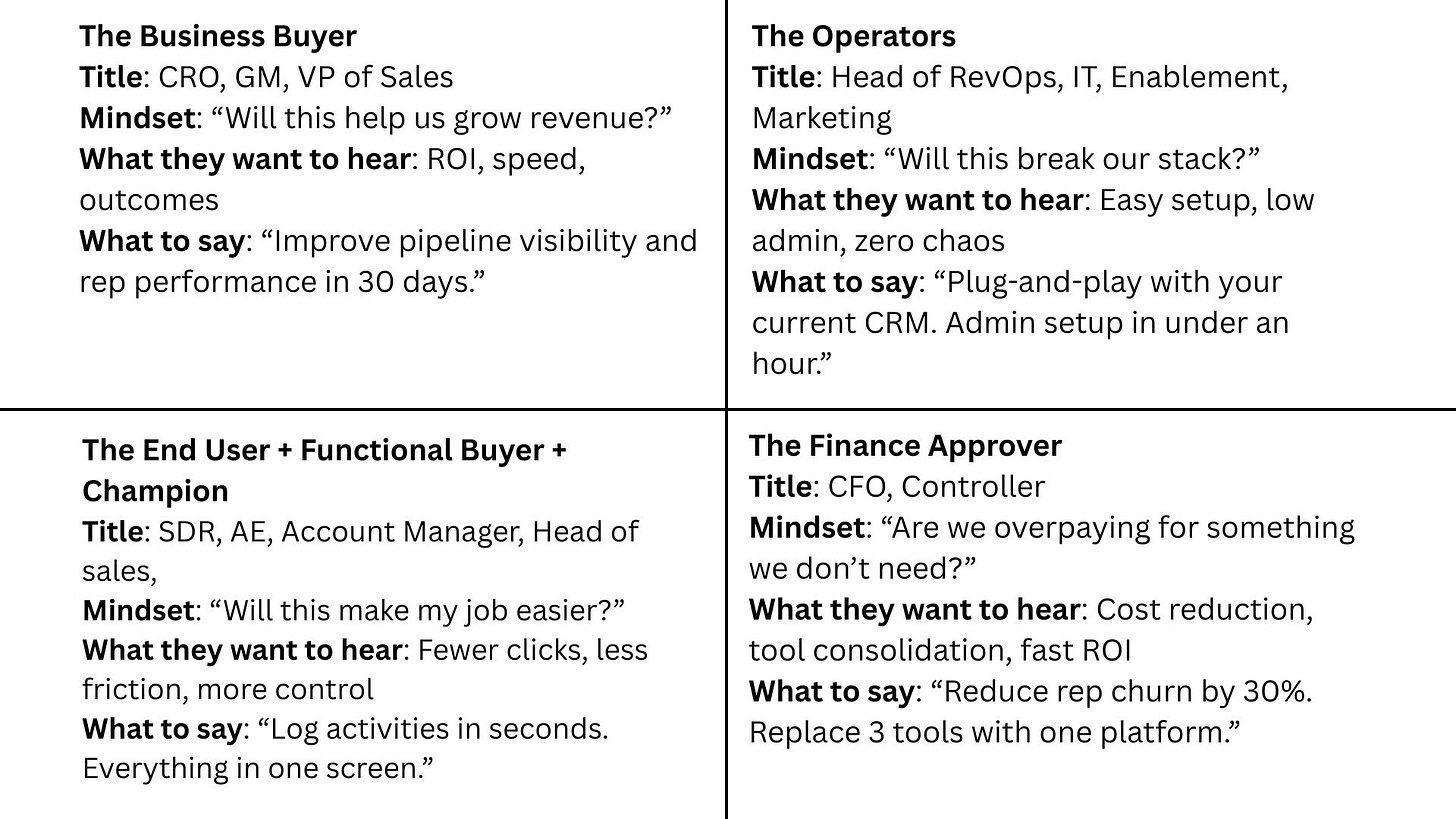B2B Marketing 101 - Understanding the buying committee
Why You’re Losing Deals You Should Be Closing: You Don’t Understand the Buying Committee
You finally get a demo with a large enterprise.
The conversation went well. The champion is excited.
They say, “Let me take this back to the team.”
And then… nothing.
Silence. No updates. No decision.
Just another lost opportunity.
What happened?
What is Wrong
Most Deals Don’t Die Because of Product. They Die Because of People.
Specifically, the people you didn’t talk to.
The ones inside the company who actually make the decision.
Your demo convinced the person on the call.
But not the people who weren’t in the room.
That’s the buying committee.
And if you don’t understand them, you don’t win.
The Biggest Myth in B2B: “The Buyer”
Marketers love to talk about the buyer.
They build personas, messaging, and collateral for that one ideal decision-maker.
But in enterprise sales, that person doesn’t exist.
There is no “one” buyer.
There is a group.
Each with their own agenda, lens, risk, and influence.
That group is the buying committee.
And you need all of them to say yes.
How it really works?
Let’s Break It Down: A CRM Example
You’re selling a CRM to a 500-person SaaS company.
Here’s how the buying journey actually plays out.
The CBO wants better visibility into sales performance.
So they ask their team to explore CRM options.
The Head of Sales delegates to a sales manager or analyst.
They research tools, ask around, shortlist a few, and schedule demos.
You’re now in the picture.
But you’re only speaking to one person.
The real decision, though, involves a committee.
And you’re invisible to most of them.
The Four Core Members of the Buying Committee
Every enterprise sale involves some version of these four people in the committee.
What Most Marketers Get Wrong
They build one message.
One deck. One page. One pitch.
And they expect it to convince four different people.
It doesn’t.
The champion ends up trying to explain your product to the rest.
But they don’t have the language to speak to Finance, IT, or Leadership.
So the message gets diluted.
The pitch falls apart.
And the deal dies.
How to fix this?
Why Understanding the Committee Changes Everything
When you know who the real stakeholders are,
you stop writing for a buyer — and start writing for a system.
Your homepage speaks to the analyst.
Your one-pager helps the champion pitch Finance.
Your deck shows Ops how easy it is to roll out.
Your case study gives the CBO confidence in the outcome.
You’re not selling to a person.
You’re enabling consensus.
How to Build Content That Actually Closes
Map the Committee for Your Product
Who usually starts the search?
Who gets pulled in during evaluation?
Who signs off at the end?
Create role-based insights, not generic messaging.
Make a real stakeholder map.
Build Assets by Role, Not Just Persona
You don’t need 20 personas.
You need 4 clear assets:
A value summary for the Business Buyer
A cost + ROI page for Finance
A setup + workflow deck for Ops
A product walkthrough for the Champion
Equip Your Champion to Sell Internally
Your best sales rep is not your AE.
It’s your champion inside the company.
Give them a folder with clean, modular, role-specific content.
So they can pitch without guessing.
If You Ignore the Committee, You Lose by Default
You can have the best product.
The cleanest demo. The slickest website.
But if your message doesn’t help each stakeholder say yes,
you will lose to someone who does.
Not because they’re better.
But because they understood the committee.
Try This, Next Week
Pick three deals that went cold.
Write down who the decision-makers were — real names, real roles.
Now look at your assets.
Did any of them speak directly to those people?
If not, start there.
Fix the blind spots.
Understand the committee, and you’ll start closing like you should.




